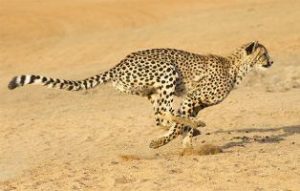
Solar System Primary Resource
Take a fascinating journey through our solar system…
This Science primary resource introduces children to the solar system. Discover the planets, stars, moons, comets and dwarf planets of our solar system. What’s the largest planet? Why does Uranus spin on its side? Which planet has a moon named Triton? What’s the difference between a planet and a dwarf planet?
Using our National Geographic Kids’ Space primary resource sheet, pupils will learn fascinating facts about the solar system by taking a journey to the different planets orbiting the Sun.
The teaching resource can be used in study group tasks for learning about space and the solar system; as a printed handout for each pupil to review and annotate; or for display on the interactive whiteboard using the images included in the resource for class discussion.
Activity: Ask the children to make a solar system display for the classroom. Divide the class into groups, with each group focusing on a different planet. They could create a poster for their planet, including key facts and features (such as its size, distance from the sun, moons etc). Alternatively, groups could make their planets from papier-mâché and other materials to hang from the classroom ceiling.
N.B. The following information for mapping the resource documents to the school curriculum is specifically tailored to the English National Curriculum and Scottish Curriculum for Excellence. We are currently working to bring specifically tailored curriculum resource links for our other territories; including South Africa, Australia and New Zealand. If you have any queries about our upcoming curriculum resource links, please email: schools@ngkids.co.uk
This Science primary resource assists with teaching the following Upper Key Stage 2 Science (Year 5) objectives from the National Curriculum:
Pupils should be taught to:
-
- describe the movement of the Earth, and other planets, relative to the Sun in the solar system
- describe the movement of the Earth, and other planets, relative to the Sun in the solar system
-
- describe the movement of the Moon relative to the Earth
- describe the Sun, Earth and Moon as approximately spherical bodies
Pupils should learn that the Sun is a star at the centre of our solar system and that it has eight planets: Mercury, Venus, Earth, Mars, Jupiter, Saturn, Uranus and Neptune (Pluto was reclassified as a ‘dwarf planet’ in 2006). They should understand that a moon is a celestial body that orbits a planet (Earth has one moon; Jupiter has four large moons and numerous smaller ones).
This Science primary resource assists with teaching the following Sciences Early level objectives from the Scottish Curriculum for Excellence:
-
I have experienced the wonder of looking at the vastness of the sky, and can recognise the sun, moon and stars and link them to daily patterns of life.
This Science primary resource assists with teaching the following Sciences Second level objectives from the Scottish Curriculum for Excellence:
- By observing and researching features of our solar system, I can use simple models to communicate my understanding of size, scale, time and relative motion within it.
Scottish Curriculum for Excellence Sciences Third level objectives:
- By using my knowledge of our solar system and the basic needs of living things, I can produce a reasoned argument on the likelihood of life existing elsewhere in the universe.
Download primary resource
More Like

Germany Facts

IGGY PECK
AND THE MYSTERIOUS MANSION

The Right Stuff!









LEAVE A COMMENT
THANK YOU
Your comment will be checked and approved shortly.
WELL DONE,
YOUR COMMENT
HAS BEEN ADDED!
COMMENTS
I love this
Cool
great
amazing
CUSTOMIZE YOUR AVATAR